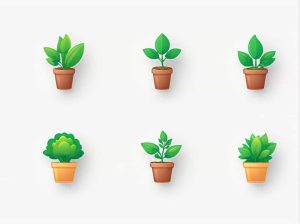Fruits come in many shapes sizes and structures. One fascinating type is the drupe a fruit with a fleshy outer part and a hard stone-like seed inside. Drupes are commonly found in both wild and cultivated plants and they play an essential role in ecosystems and human diets.
This topic explores the definition of a drupe its characteristics examples and its importance in nature and agriculture.
What Is a Drupe?
A drupe is a type of fruit that has three distinct layers:
- Exocarp (Skin): The outer layer which can be thin thick smooth or fuzzy.
- Mesocarp (Flesh): The middle layer usually soft and edible.
- Endocarp (Stone or Pit): The hard woody layer surrounding the seed.
Unlike berries which have multiple seeds distributed throughout the fruit drupes contain a single seed enclosed in a hard shell.
Characteristics of Drupes
To classify as a drupe a fruit must have the following features:
- One hard pit (endocarp) inside the fruit.
- Fleshy or fibrous mesocarp that surrounds the pit.
- A protective outer skin (exocarp) that varies in texture.
Drupes can be found in various climates from tropical regions to temperate zones and they come in a range of sizes and flavors.
Examples of Drupes
Many popular fruits are drupes including:
1. Peaches (Prunus persica)
Peaches are classic drupes with fuzzy skin juicy flesh and a large central pit. They are widely cultivated and enjoyed fresh dried or in desserts.
2. Cherries (Prunus avium)
Cherries have smooth thin skin and a single pit inside. They are eaten fresh made into jams or used in baking.
3. Plums (Prunus domestica)
Plums have a smooth skin soft flesh and a stone at the center. They can be consumed raw or dried to make prunes.
4. Mangoes (Mangifera indica)
Mangoes are tropical drupes with a thick skin fibrous flesh and a large flat seed inside. They are rich in vitamins and widely used in culinary dishes.
5. Olives (Olea europaea)
Olives are small drupes with a firm skin and a single stone. They are commonly cured and processed into olive oil.
6. Coconuts (Cocos nucifera)
Coconuts are specialized drupes with a fibrous outer layer a hard shell and a seed inside. The white coconut flesh and water inside are edible.
7. Walnuts (Juglans regia)
Though often mistaken for nuts walnuts are technically drupes with a hard shell enclosing the edible seed.
Types of Drupes
Drupes come in different forms depending on the characteristics of their outer layers.
1. Simple Drupes
These have a soft fleshy outer layer and a hard pit inside. Examples: peaches cherries and plums.
2. Dry Drupes
Some drupes have a hard outer covering that dries over time. Examples: almonds and walnuts.
3. Aggregate Drupes
These are formed from multiple ovaries of a single flower producing a cluster of small drupes. Example: raspberries.
Drupes vs. Other Fruit Types
Many fruits resemble drupes but belong to different categories. Here’s how drupes compare to other fruits:
Drupes vs. Berries
- Drupes have one pit; berries have multiple seeds inside soft flesh.
- Examples of berries: grapes tomatoes and bananas.
Drupes vs. Nuts
- Drupes contain a fleshy part around a seed while nuts have a hard outer shell.
- Examples of true nuts: hazelnuts chestnuts and acorns.
Drupes vs. Pomes
- Drupes have a central stone while pomes (e.g. apples and pears) have multiple small seeds in a core.
Why Are Drupes Important?
Drupes are essential in various ways:
1. Nutrition and Health
Many drupes are rich in vitamins antioxidants and fiber making them valuable for a healthy diet. Mangoes for example provide vitamin C while walnuts offer omega-3 fatty acids.
2. Economic Significance
Drupes like cherries olives and almonds are major agricultural products. They support farming industries worldwide providing food and raw materials.
3. Ecological Role
In nature drupes help plants reproduce. Birds and animals eat the fruit dispersing the seeds through their waste which aids in forest regeneration.
How to Grow Drupe-Producing Trees
If you want to cultivate drupe-bearing plants follow these general guidelines:
1. Choose the Right Climate
Most drupes prefer warm temperate or tropical climates. Ensure the plant is suited to your region’s weather conditions.
2. Provide Well-Draining Soil
Drupe-producing trees grow best in soil that drains well but retains some moisture. Sandy or loamy soil is ideal.
3. Regular Pruning
Pruning helps improve fruit production and keeps trees healthy. Remove dead or overcrowded branches to allow better air circulation.
4. Protect from Pests
Birds insects and rodents are attracted to drupe fruits. Use protective netting or organic pest control methods to keep your plants safe.
5. Ensure Proper Pollination
Some drupe trees require cross-pollination meaning they need another tree of the same species nearby to produce fruit. Cherries for example often require a second tree for pollination.
Drupes are a fascinating and diverse group of fruits that play an essential role in agriculture nutrition and ecosystems. From juicy peaches to hardy walnuts these fruits provide both delicious flavors and health benefits. Understanding their characteristics and importance can help us appreciate them more whether we’re growing them in our gardens or enjoying them as part of our diet.
Next time you bite into a mango or cherry remember—you’re eating a drupe!



